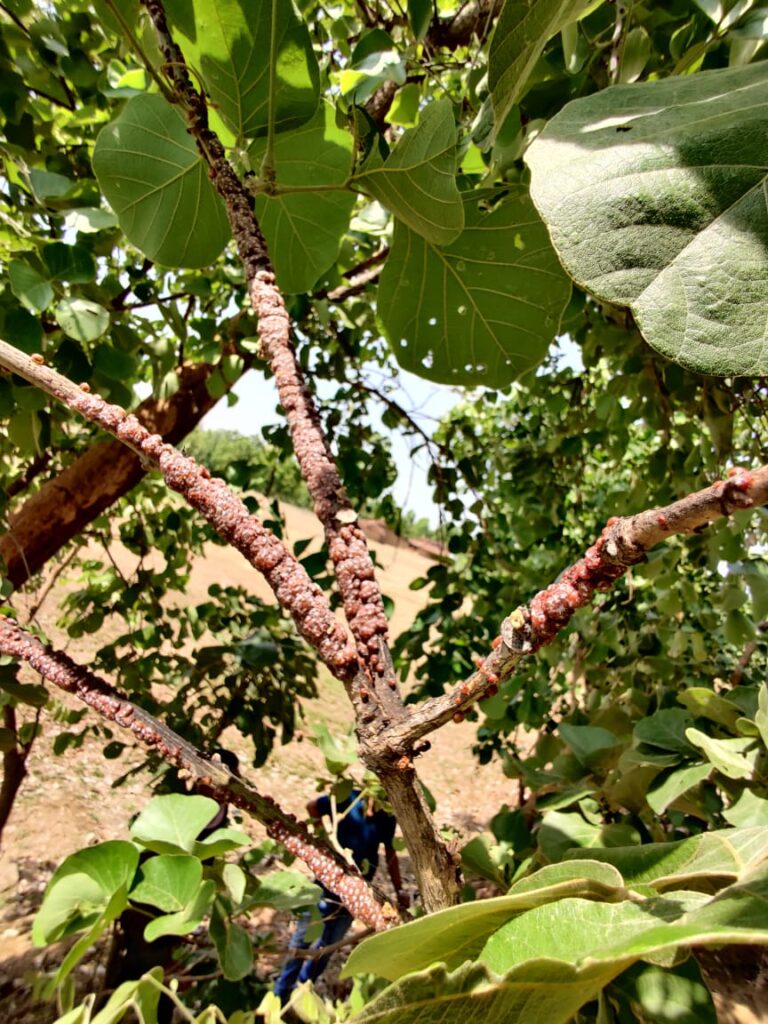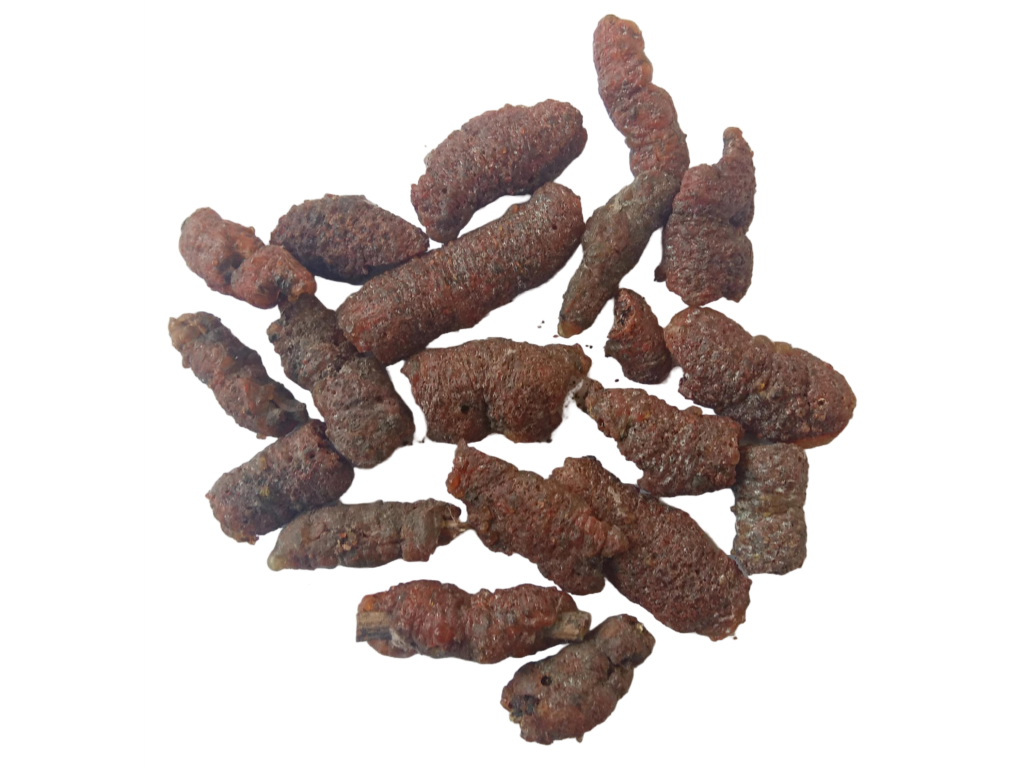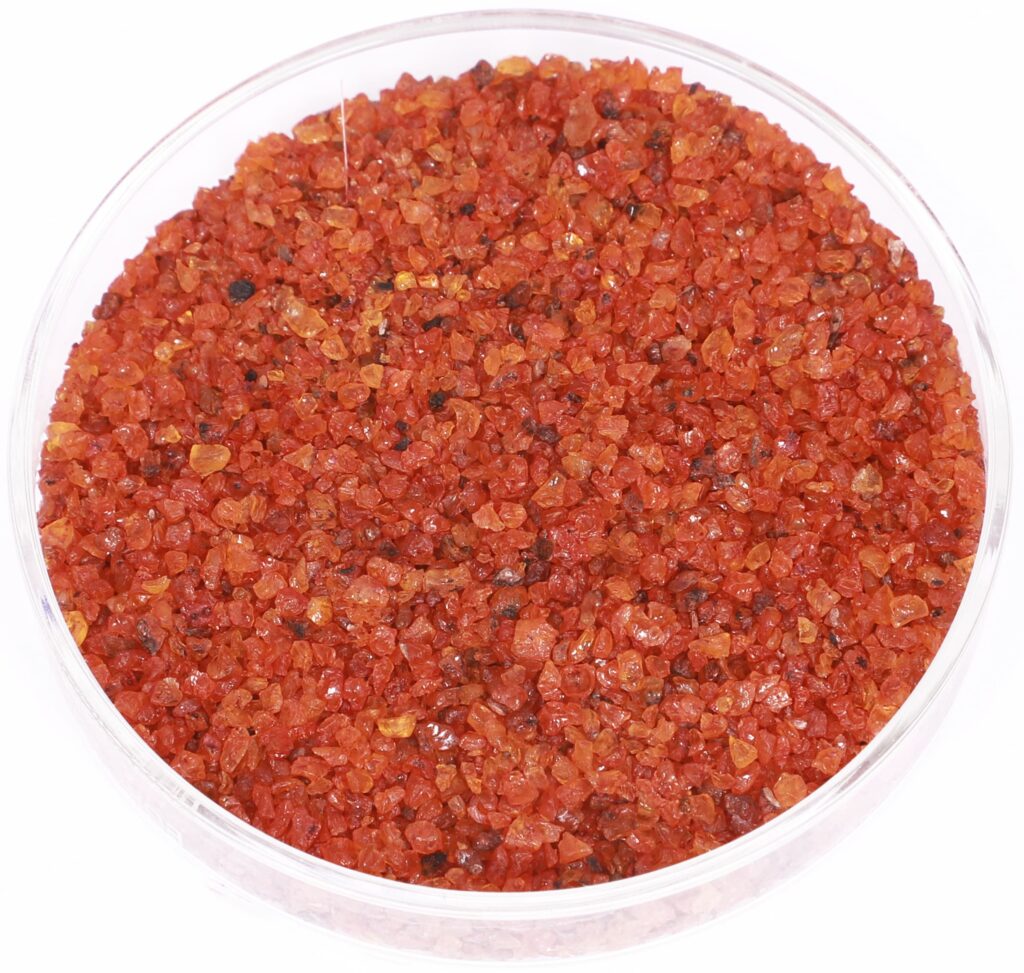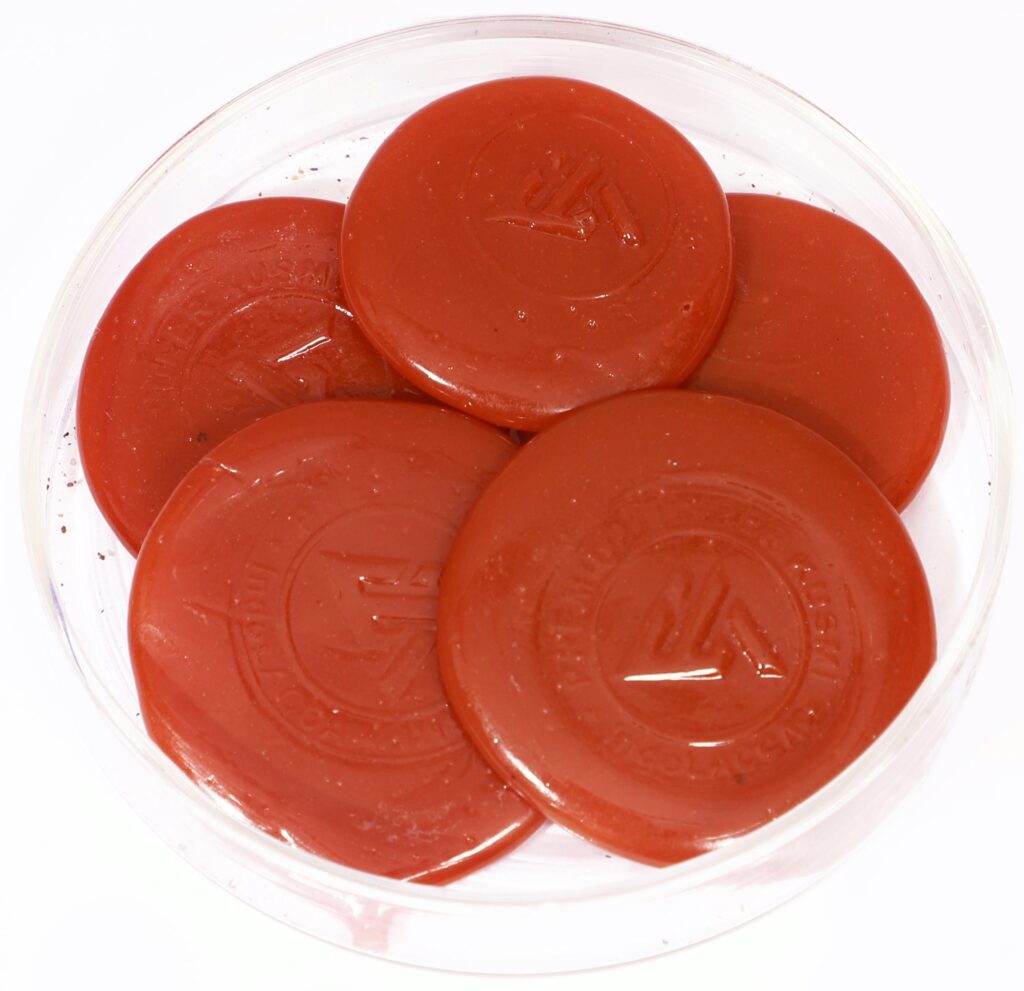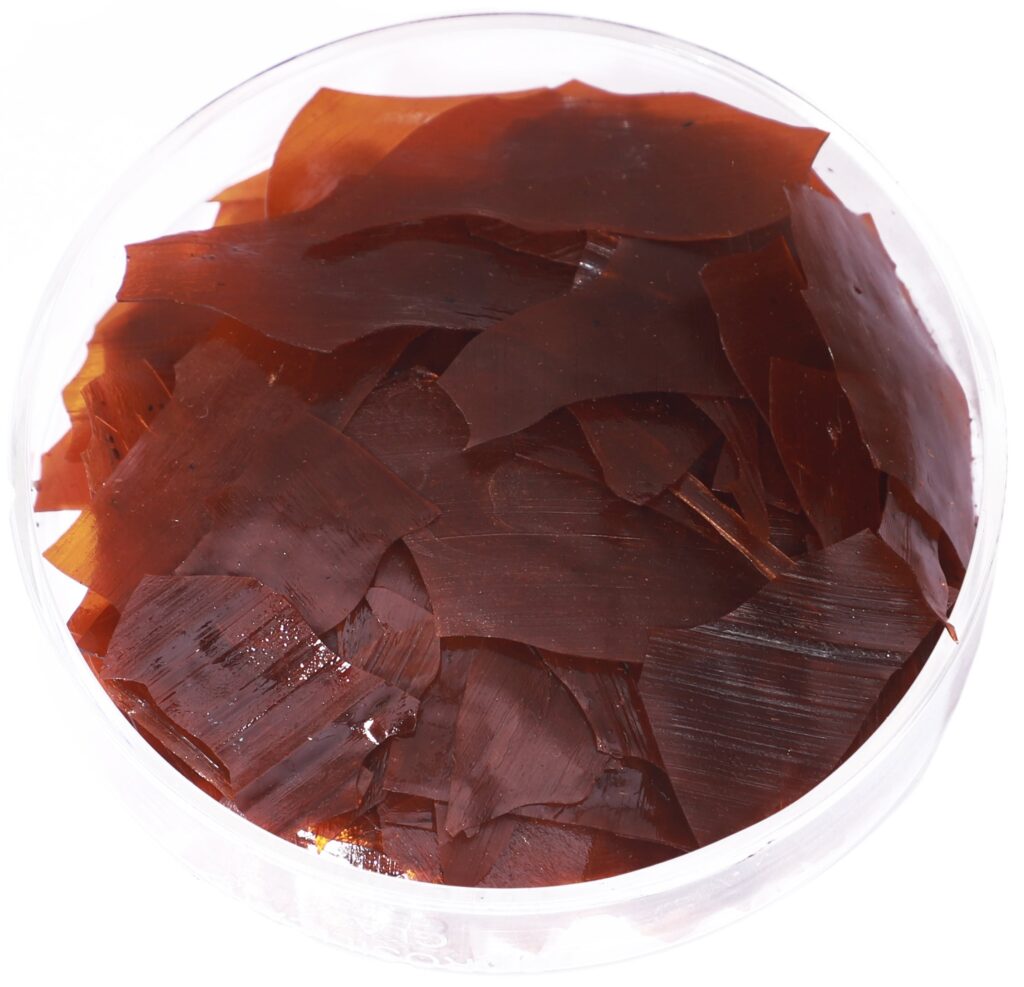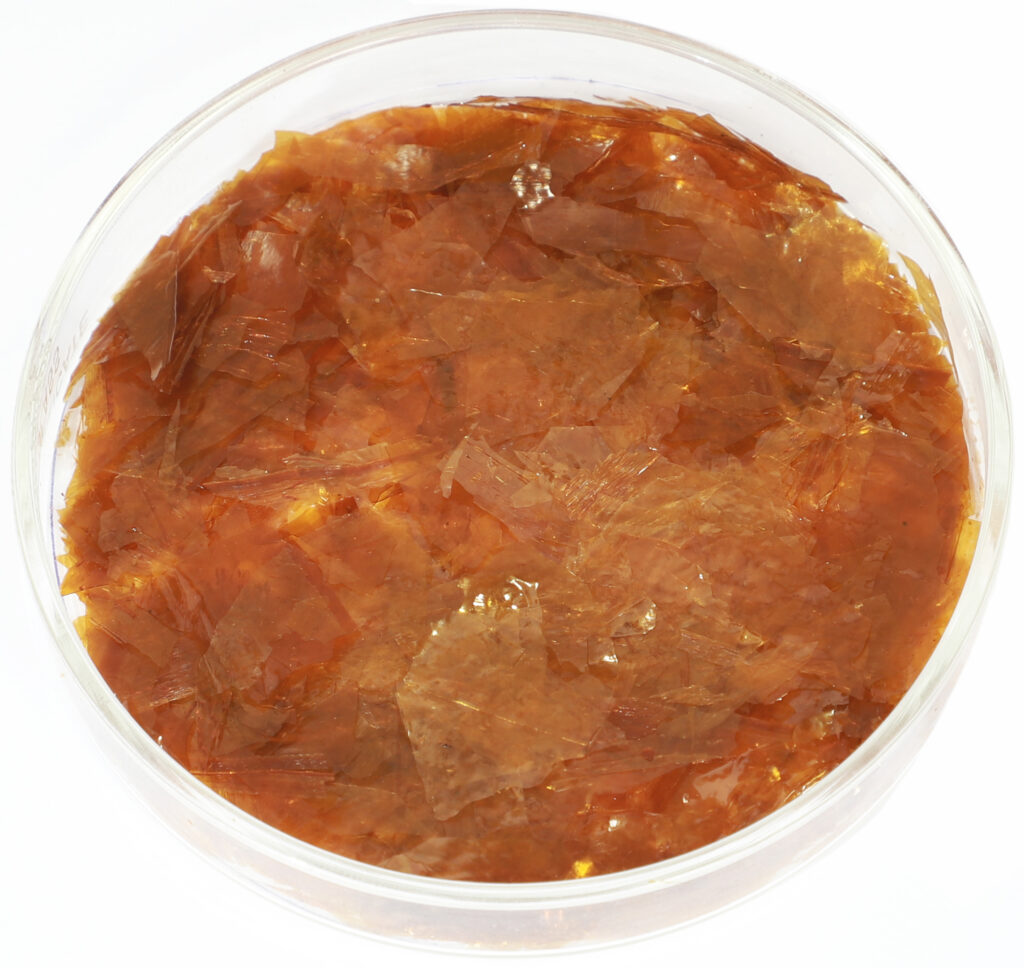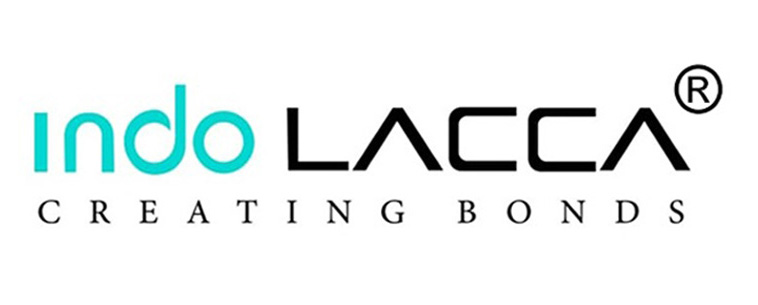About LAC
Lac is a natural, biodegradable, non-toxic, odourless, tasteless, hard resin and non-injurious to health.
The refined form of Lac resin – Shellac is labeled as GRAS (generally recognized as safe) by the US FDA (United States Food and Drug Administration) since 1939 and is widely used across multiple coating industries.
ORIGIN
The name LAC is derived from the Sanskrit word “Lakh” which means numerical 100,000. It is given so considering the myriad of Lac insects which swarm together on their host trees and secrete the natural resin together. It is estimated that as many as 150,000 Lac insects participate to produce the quantity of the natural crude Lac resin that can yield one pound (450 gms approx.) of refined & purified form of Lac resin – Shellac.
The Lac insects are called as Laccifer Lacca, Kerr., which are small insects belonging to the Coccida family of the order Hemiptera that live on certain host trees namely Ber (Zizyphus jujuba), Kusum (Schleichera trijuga), Khair (Acacia catechu), Palas (Butea frondosa) etc.
In India, the major quantity of the Lac resin comes from the Ber (Zizyphus jujuba), Kusum (Schleichera trijuga) and Palas (Butea frondosa) trees. The lac strain from the Ber and Kusum trees is known as KUSMI (Aghani & Jethwi crops) and that of Palas is RANGEENI (Baisakhi & Katki crops).
The quality of the lac differs based on the host tree while KUSMI from the Kusum tree yields the world’s best coloured Lac resin which is having much paler colour as compared to other host trees.
SUSTAINABILITY
Since ages, the Lac cultivation has been the core livelihood among the Tribal families in India located primarily at the Chotanagpur Plateau region that covers the Indian states of Jharkhand, Chattisgarh and parts of Orissa.
Lac cultivation is free from high technical know-how practices, does not require large capital and more importantly requires only part time attention during their entire growth life cycle and hence it is eminently suited to the tribal/rural families who live in the vicinity of the natural forests.
FROM NATURE TO OUR LIFE
Stick Lac
The lac encrustations grown on the branches and twigs of the host trees are first cut off and then scraped by the lac farmers which are commercially known as Sticklac.
Sticklac consists of the Lac resin, colouring matter (dye), wax, woody matter and insect bodies in approximate below proportions –
|
Lac Resin |
68% |
|
Wax |
6% |
|
Colouring Matter (dye) |
1% |
|
Others |
25% |
Seedlac
The Sticklac is further processed into the semi-refined form of the Lac resin known as Seedlac by washing it thoroughly in a specially designed Washing barrel using an Alkaline solution.
This washing process separates out the impurities, colouring material as present in the Crude Sticklac and gives Seedlac resin in granular form which is further dried and winnowed to remove fine dust particles before it is finally sieved as per the commercial sizes.
Seedlac comes in various Commercial Grades depending on the host tree of the Sticklac and is marketed using Various names and Specifications as mentioned here.
Know more about Our Seedlac grades
Lac Button
The Lac Button is obtained by the process of manual hot-filtration, whereas the Seedlac of a suitable grade is used as the raw material.
The Seedlac is packed into a long, narrow sausage-shaped canvas bag held in place by two workers in front of an open charcoal fire of the Dutch Oven type. The Seedlac inside melts and the workers twist the bag in opposite direction so that the molten Lac is forced out through the walls of the bag.
The molten Lac is then scrapped and spread out on flat steel plates in the form of Circular discs. This operation is carried out in front of charcoal fire to keep the resin plastic.
Know more about Our Lac Button grades
Hand Made Shellac Flakes
The Hand Made Shellac is obtained by the process of manual hot-filtration, whereas the Seedlac of a suitable grade is used as the raw material.
The Seedlac is packed into a long, narrow sausage-shaped canvas bag held in place by two workers in front of an open charcoal fire of the Dutch Oven type. The Seedlac inside melts and the workers twist the bag in opposite direction so that the molten Lac is forced out through the walls of the bag.
The molten Lac is then spread out on a porcelain cylindrical jar containing boiling water into a sheet approx. 2.5 feet long and 0.25 inch thick. Now holding the lower corners of the sheet by means of his toes and the upper ones with his hands and grasping the centre of the upper edge with his teeth, the worker very skillfully and gradually stretches the sheet into a large thin sheet of the desired size. This operation is carried out in front of charcoal fire to keep the resin plastic.
The Sheet is then broken into small pieces to form Shellac flakes which are aerated in a well ventilated room before packing.
Know more about Our Hand Made Shellac grades
Machine Made Shellac Flakes
The Machine Made Shellac is obtained by the process of hot-filtration, whereas the Seedlac of a suitable grade is used as the raw material.
It is melted using Steam heat inside a specially designed hydraulic press and then filtered out through filter materials to separate the impurities from the Lac resin.
The soft molten refined Lac resin is then further stretched into long continuous sheets of suitable thickness using rollers.
The sheets are then broken into pieces for commercial sale.
